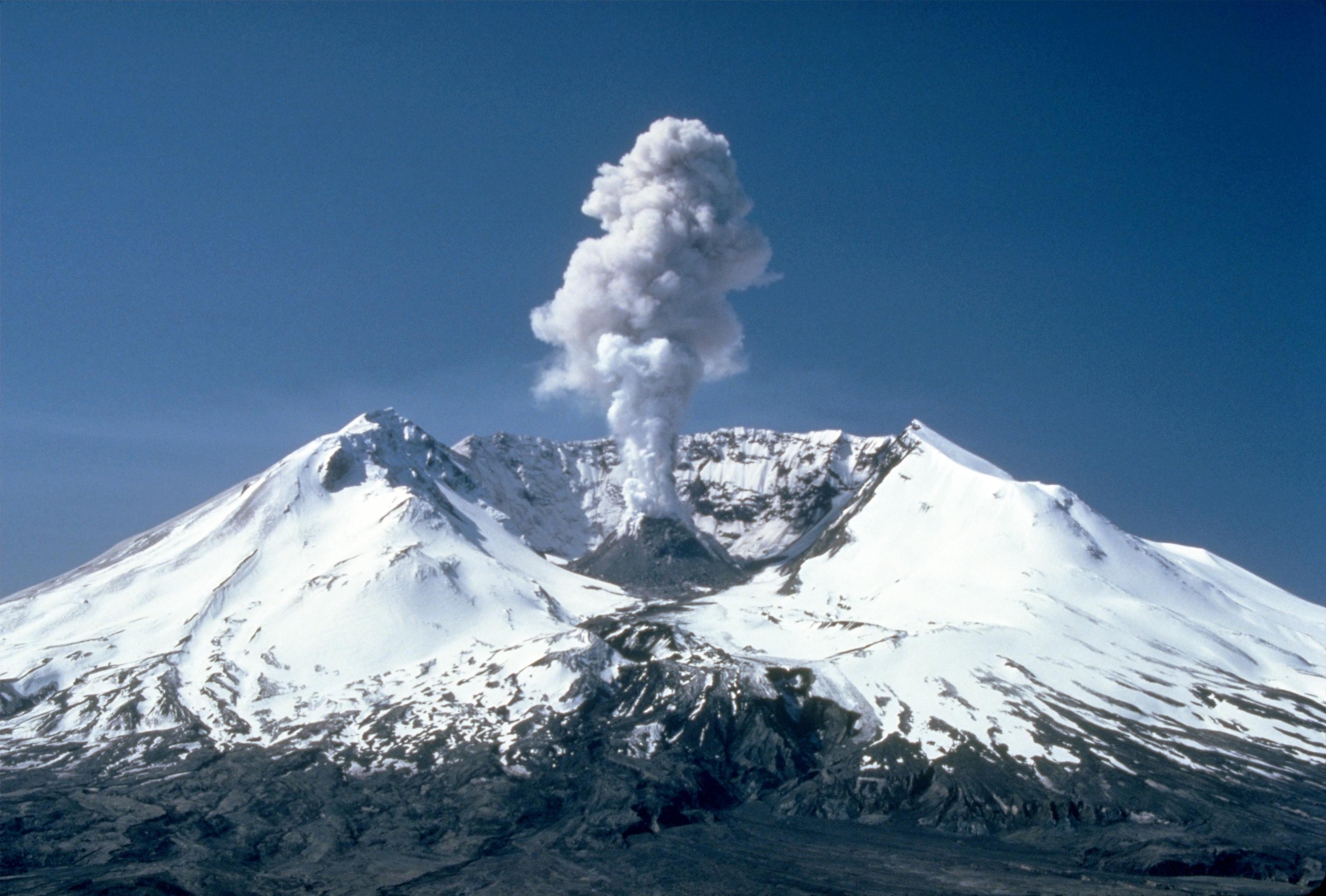
Mount St. Helens is several miles west of where it might be expected to be when looking at the Ring-Of-Fire.
Oregon State University
For years, scientists have wondered why Mount St. Helens is out of line with other volcanoes on the Pacific Northwest’s ring-of-fire.
Oregon State University scientists think they now have the answer.
OSU geophysicist Adam Schultz and his team think a giant subsurface rock formation, about 25 miles in diameter, diverted magma and melted rock off the ring-of-fire’s arc.
That formation, known as the Spirit Lake batholith, pushed the magma westward.
“It seems like what we call the Spirit Lake batholith is probably the reason why Mount St. Helens actually pops up far to the west of where you would anticipate it to be,” Schultz said.
Older imaging studies show the structure, density and temperature of what’s under the mountain, and more recent use of magnetotelluric measurements — which show the Earth’s subsurface electrical conductivity — reveal fluids like magma.
The OSU team said it layered the two types of images together and created a much clearer picture of what lies below. It’s being published this week in the journal "Nature Geoscience."
“Either method by itself can lead to a level of uncertainty, but when you layer them together as we have done in this project you get a much clearer picture of what lies below,” said Schultz, who is a principal investigator on the National Science Foundation grant to OSU and co-author on the paper.
“The longer you run the measurements, the crisper the images and the deeper you can ‘see’ the subsurface," he said. "We were focusing on the upper 12-15 kilometers of the crust, but with a longer experiment we could see 200-300 kilometers below the surface."
Understanding the formation of Mount St. Helens begins with plate tectonics. Similar to the present day, where the Juan de Fuca plate is being subducted beneath North America, past crustal blocks with marine sediments were “slammed into the continent, where they accreted,” according to Schultz.
“This material is more permeable than surrounding rock and allows the magma to move through it,” he said. “The big batholith acts kind of like a plug in the crust and diverted magma that normally would have erupted in line with the other major Cascade volcanoes, resulting in St. Helens forming to the west of the Cascadia Arc, and Mount Adams slightly to the east.”
Watch: How dangerous are the Northwest's volcanoes?
